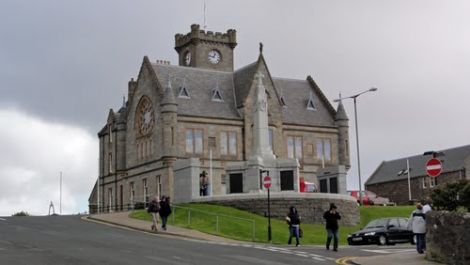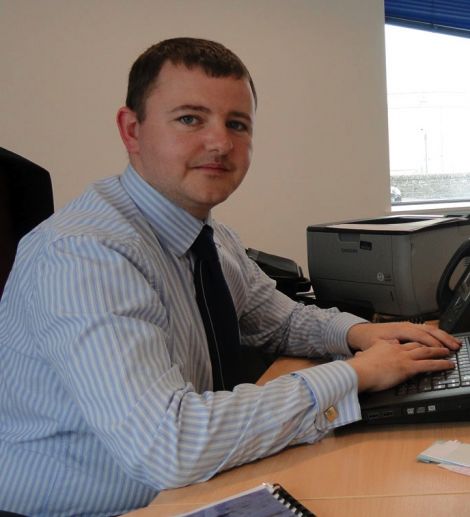News / Decision time on council cuts
A MASSIVE savings exercise reviewing every service delivered by Shetland Island Council comes before senior members on Thursday.
Managers throughout the authority have carried out a root and branch review of SIC spending to help find 20 per cent cuts over four years.
The savings will see the council’s workforce shrink by one fifth from almost 3,000 two years ago to around 2,400 with the hope of no compulsory redundancies.
The exercise led by finance director James Gray is the largest of its kind ever undertaken by the authority and reflects the scale of the financial challenge ahead.
The SIC’s executive committee meets on Thursday afternoon to discuss a £12.5 million savings package for the next financial year.
If agreed by the full council next Wednesday, it will take the council 70 per cent of the way towards its target of £38.36 million cuts by 2016/17, after £16 million was found during the current financial year.
Gray says that despite the cuts, Shetland will have the best funded services in Scotland along with the fourth lowest council tax, which is to be frozen for the sixth year running.
The proposed budget includes an “unsustainable” draw on the council’s oil reserves of £27.7 million, however half of this amount will be one off spending.
The council aims to balance its expenditure by March 2017, with a reserve fund valued at £125 million from which to top up services.
Pressure has been increased by the income from running the harbour at Sullom Voe falling from a predicted £3 million to just £222,000, despite a 30 per cent increase in harbour charges.
Council leader Gary Robinson said he remained open about how the savings were made, as long as the targets were met.
“When we introduced single status we made a promise we would find the £5 million a year it cost us by savings elsewhere.
Become a member of Shetland News
“This never happened, which is partly why we find ourselves in the situation we are in today, and it’s absolutely imperative that does not happen again,” he said.
The latest proposal follows a six month exercise going through the council’s spending with a fine tooth comb and discussing priorities at a string of seminars with members.
“Staff have put in a huge amount of work dismantling each service budget and building it back up again only with what needed to be in there.
“So we have done this in a very methodical way and I think we will be able to deliver this,” Robinson said.
The biggest challenge remains in children’s services where the Blueprint for Education hopes to find more than £3 million towards a target of £7 million by 2017.
The council faces a tough challenge in getting communities to accept its proposals to close four primary and five secondary schools, which form a key element of the Blueprint.
In contrast a successful community consultation over the inter island ferry service looks set to help deliver £3 million savings in the infrastructure budget over the next few years.
Robinson said the ferries consultation set the benchmark for other consultations, after many of the community’s suggestions were adopted.
Meanwhile community care is being targetted for a 10 per cent cut in the year ahead as the council seeks to reduce staff, provide more care at home and to raise or introduce charges predominantly for old folk.
Capital expenditure will be £13.7 million but just £100,000 wil be taken from reserves, with the emphasis being on maintaining just those buildings the council requires and selling off any excess stock.
Grants to local businesses are taking a severe hit, with the development budget being cut by a substantial 30 per cent, with further cuts on the cards over the following two years.
The council has meanwhile set aside £1.9 million to pay for severance packages for staff taking voluntary redundancy, while £3 million is being made available for business loans that offer an “acceptable risk” and can match the return on a stock market investment.
Robinson said he believed that if the savings package is agreed by full council next week then it should have a “snowball effect” that will help guarantee the medium term targets are met.
“We still face contentious debates about education, the Viking bus station, skip services, public toilets, amongst other things and we will only find out how much dissent there is next week.
“But that’s a symptom of where we have reached with the savings process.
“Up until now most of the savings have been made through efficiencies and we have not impacted on services, but the longer the process goes on the more of the savings are going to come out of services.
“All of this only serves to demonstrate just how far out of kilter the Shetland Islands Council’s income and expenditure has been, because it clearly wasn’t sustainable to have nearly 3,000 staff as we did back in December 2010.
“My commitment is to deliver the best quality services that we can afford and that is still very much what I am working on but clearly there does need to be some lessening of expectations.
“The biggest fear for me is that we can’t make the savings because all the indications are that the amount that we are going to get from central government is going to decline in the years ahead. I think it’s going to get even tighter.”
Become a member of Shetland News
Shetland News is asking its readers to consider paying for membership to get additional perks:
- Removal of third-party ads;
- Bookmark posts to read later;
- Exclusive curated weekly newsletter;
- Hide membership messages;
- Comments open for discussion.
If you appreciate what we do and feel strongly about impartial local journalism, then please become a member of Shetland News by either making a single payment, or setting up a monthly, quarterly or yearly subscription.































































